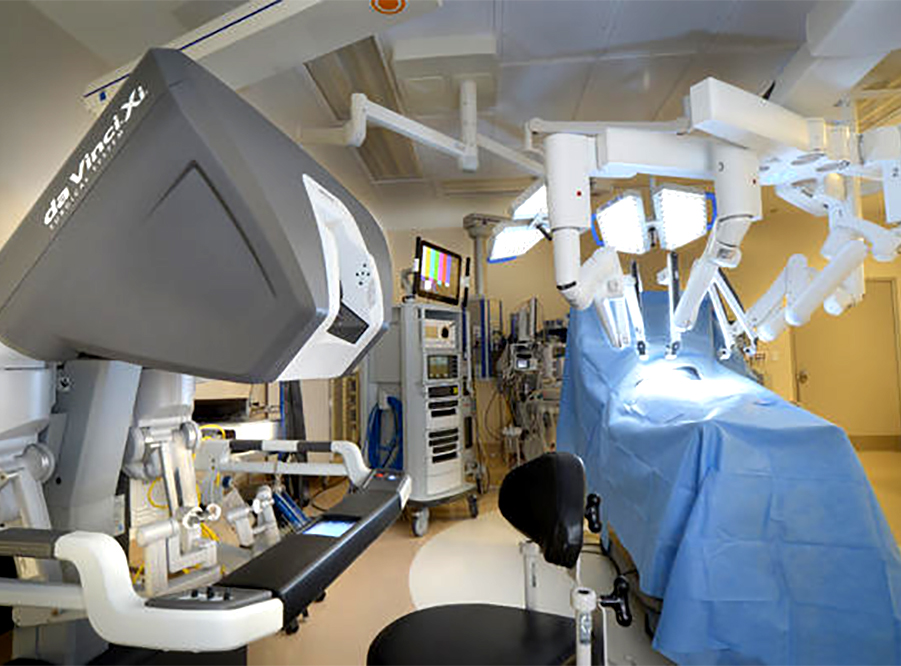
Courtesy Saratoga Hospital
Saratoga Hospital recently invested about $2 million in robot-assisted surgical technology to give patients increased access to the most advanced minimally invasive surgeries.
Funds were used to purchase the latest-generation surgical robot—the da Vinci Xi—as a second robotic system at the hospital, as well as to upgrade the hospital’s existing robotic system to the newest technology.
Both the da Vinci Xi and the newly updated robotic system provide 3D digital views of the surgical area and feature thinner, longer arms than previous models, officials said. The Xi also offers additional advanced features, such as arms mounted on an overhead boom that can rotate and pivot to virtually any position, for more involved procedures.
“We have long recognized the value of this technology and its positive impact on our patients,” said Dr. Seth A. Capello, director of robotic surgery at Saratoga Hospital. “We are committed to investing in the talent and technology to make sure our community benefits from these and other advances in care.”
Saratoga Hospital offers robotic surgery for urologic, gynecologic, thoracic and general surgery procedures. Two of the 10 operating suites in the hospital’s high-tech surgical pavilion are now dedicated for robotic surgery, the hospital said.
Officials said this minimally invasive approach is fast becoming the preferred option for many procedures because the advantages to patients can be significant: smaller incisions, shorter hospital stays, faster recovery times, reduced pain and decreased risk of complications.
Capello helped launch the hospital’s robotic surgery program in 2007.
“Today, Dr. Capello heads a team of physicians who are among the region’s most skilled in performing these highly specialized procedures—and our community reaps the benefits every day,” said Dr. Richard Falivena, vice president and chief medical and physician integration officer at Saratoga Hospital.
Saratoga Hospital has updated and expanded its infusion therapy unit to meet increased demand for these IV treatments and deliver them in a more private, comfortable setting.
The expansion is part of a $750,000 renovation to the hospital’s A3 medical-surgical floor. The new larger infusion unit has eight patient bays instead of the previous three. Each bay has its own TV and includes space for a support person to stay with the patient. The infusion unit also has been moved from an interior location to space with windows that let in natural light.
“All of these changes reflect our commitment to patient-centered care and our recognition of the importance of a more private, relaxing environment,” said Terry DeLong, director of the A3 Outpatient Infusion/Transfusion Unit and the A3 and C3 medical-surgical floors. “These infusions can take four to eight hours, so the setting can make a big difference.”
The infusions—typically blood transfusions or IV fluids—are provided on an outpatient basis to those who have cancer, blood disorders or other chronic conditions.
